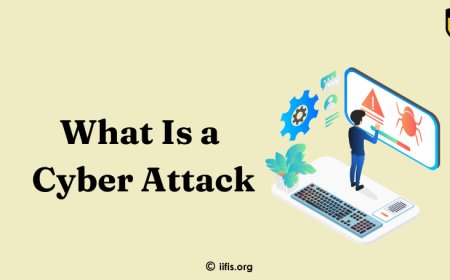Essential Security Training for Developers
Learn why essential security training is crucial for developers to protect applications from vulnerabilities. Explore key topics, certifications, and resources to enhance your coding security skills and safeguard your software.

Developers play a critical role in ensuring the security of software applications and systems. Essential security training for developers is crucial for building strong, secure applications that protect sensitive data and withstand cyber threats. Understanding key concepts such as secure coding practices, vulnerability assessment, and threat mitigation strategies is essential. This training equips developers with the knowledge to identify potential security risks, implement effective countermeasures, and stay ahead of emerging threats, ensuring the integrity and safety of their software solutions.
What is Security Training?
Security training is an educational program designed to equip individuals with the knowledge and skills necessary to protect information systems, data, and technology infrastructure from cyber threats and security violations. This training covers a wide range of topics, including:
-
Basic Security Principles: Understanding fundamental concepts like confidentiality, integrity, and availability.
-
Risk Assessment: Learning how to identify and evaluate potential security risks and vulnerabilities.
-
Threat Awareness: Recognizing different types of cyber threats, such as malware, phishing, and social engineering.
-
Secure Practices: Implementing best practices for secure coding, password management, and data encryption.
-
Incident Response: Preparing for and responding to security incidents and breaches effectively.
-
Compliance and Regulations: Understanding relevant laws and regulations, such as GDPR and HIPAA, and ensuring compliance.
Security training is essential for all professionals involved in managing or interacting with information systems, helping them to proactively address security challenges and protect critical assets.
Why Security Training is Crucial
-
Rising Number of Cyber Threats and Weakness
The digital world is rapidly evolving, and with it, so are the tactics of cybercriminals. The increasing frequency and sophistication of cyber threats—such as ransomware, phishing attacks, and zero-day weaknesses pose significant risks to organizations and individuals. Security training helps professionals stay updated on the latest threat world and weakness, ensuring they can identify and address potential risks before they become critical issues.
-
Impact of Security Breaches on Businesses and Users
Security breaches can have severe repercussions for businesses and users alike. For businesses, the consequences often include financial losses, reputational damage, and legal liabilities. Data breaches can lead to loss of sensitive customer information, resulting in regulatory fines and a loss of customer trust. For users, breaches can mean identity theft, financial fraud, and a loss of personal privacy. Effective security training mitigates these risks by fostering a culture of security awareness and proactive risk management. -
Benefits of Proactive Security Training for Developers
Proactive security training for developers offers several key benefits: -
Enhanced Security Practices: Developers learn secure coding practices and how to integrate security measures from the beginning of the development process, reducing the risk of weakness.
-
Early Detection of Issues: Training helps developers recognize potential security issues during development, enabling them to address weakness
before they reach production.
-
Increased Awareness: By understanding the latest threats and best practices, developers are better equipped to build robust and secure applications.
-
Compliance and Risk Management: Training ensures that developers follow industry standards and regulatory requirements, minimizing legal and compliance risks.
Investing in security training is essential for protecting against the growing number of cyber threats and ensuring the protection of both business and user data.
Key Topics in Security Training for Developers
-
Understanding Common Vulnerabilities
-
SQL Injection: This occurs when an attacker inserts or manipulates malicious SQL queries via user input fields. Developers need to learn how to use prepared statements and parameterized queries to prevent SQL injection attacks.
-
Cross-Site Scripting (XSS): XSS weakness allows attackers to inject malicious scripts into web pages viewed by other users. Training should focus on proper output encoding and using Content Security Policy (CSP) to mitigate XSS risks.
-
Cross-Site Request Forgery (CSRF): CSRF attacks trick users into performing actions without their consent,using the user's authenticated session. Developers should implement anti-CSRF tokens and validate requests to prevent these attacks.
-
Secure Coding Practices
-
Input Validation and Sanitization: Ensuring that all user inputs are validated and sanitized helps prevent various types of attacks, including injection and XSS. This involves setting strict input constraints and using functions to clean data.
-
Secure Authentication and Authorization: Implementing strong authentication mechanisms and properly managing user permissions is crucial. This includes using multi-factor authentication (MFA) and enforcing least privilege access controls.
-
Data Encryption: Protecting sensitive data through encryption both at rest and in transit ensures confidentiality and integrity. Developers should utilize encryption standards and practices to safeguard data.
-
Security Testing and Tools
-
Static Application Security Testing (SAST): SAST tools analyze source code or binaries for vulnerabilities without executing the application. This helps identify potential security flaws early in the development process.
-
Dynamic Application Security Testing (DAST): DAST tools test applications in their running state to find weaknesses that manifest during execution. These tools simulate attacks to uncover security weaknesses.
-
Penetration Testing: Conducting simulated attacks on applications to evaluate their security posture helps identify and address potential vulnerabilities from an attacker’s perspective.
-
Staying Updated with Security Trends
-
Importance of Continuous Learning: Security threats and best practices are constantly evolving. Continuous learning ensures developers stay informed about the latest threats, tools, and techniques to protect their applications.
-
Following Industry Updates and Best Practices: Keeping up with industry updates, security advisories, and best practices from reputable sources helps developers maintain effective security measures and adapt to new challenges.
These key topics are essential for equipping developers with the knowledge and skills needed to build secure applications and protect against evolving cyber threats.
Recommended Training Programs and Resources

1.Certifications
-
-
Certified Ethical Hacker (CEH): Offered by IIFIS, this certification focuses on ethical hacking techniques, providing hands-on experience in identifying and addressing security vulnerabilities from an attacker’s perspective.
-
Certified Information Systems Security Professional (CISSP): Available through IIFIS, CISSP covers a wide range of security topics, including risk management, security architecture, and operations, ideal for developers seeking comprehensive security expertise.
-
-
Online Courses and Workshops
-
Platforms and Specific Courses for Developers:
-
IIFIS: Offers specialized courses for developers, including "Secure Coding Fundamentals" and "Advanced Application Security Techniques," designed to provide practical insights and hands-on experience in securing applications.
-
-
-
Books and Tutorials
-
Suggested Readings for In-Depth Knowledge:
-
"The Web Application Hacker's Handbook" by Dafydd Stuttard and Marcus Pinto: Provides a thorough understanding of web application security, including detailed explanations of vulnerabilities and attack techniques.
-
"Secure Coding in C and C++" by Robert C. Seacord: Offers practical advice on writing secure code in C and C++, helping developers avoid common security pitfalls.
-
"Practical Cryptography for Developers" by Svetlin Nakov and others: Delivers an in-depth look at cryptographic algorithms and their implementation in software development.
-
-
These IIFIS resources and training programs are tailored to help developers build secure applications and stay updated with best practices in information security.
Security training is essential for developers to stay ahead of growing cyber threats and protect applications effectively. By understanding common vulnerabilities and secure coding practices, developers can significantly reduce risks and enhance the safety of their software.
Invest in your security education by exploring resources from IIFIS, including their certifications and specialized courses. Make security a priority in your development process and start with these recommended resources to build robust and secure applications.
























